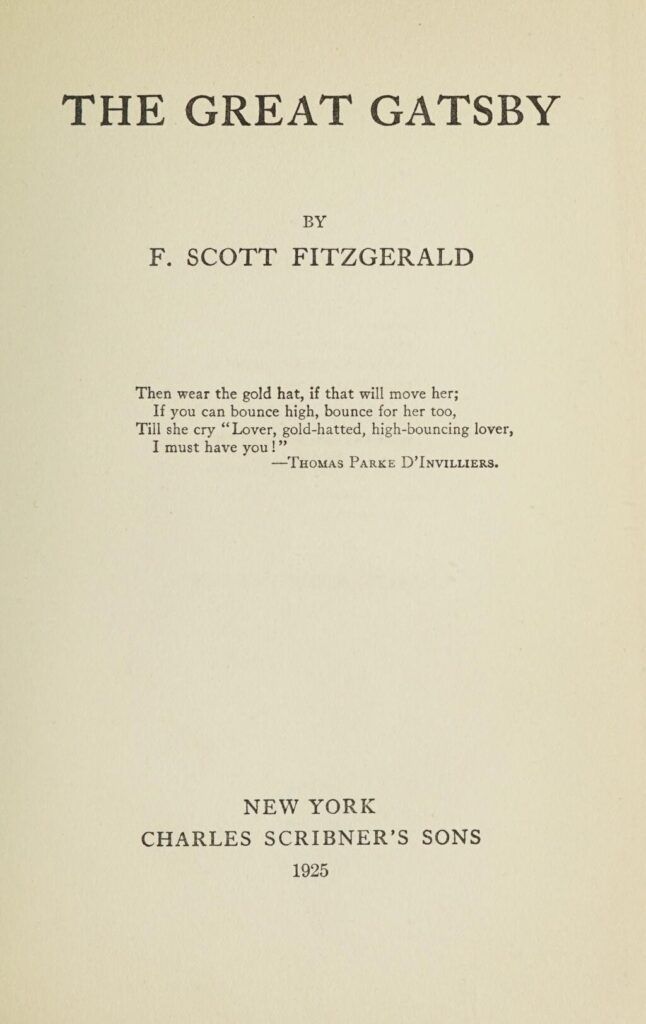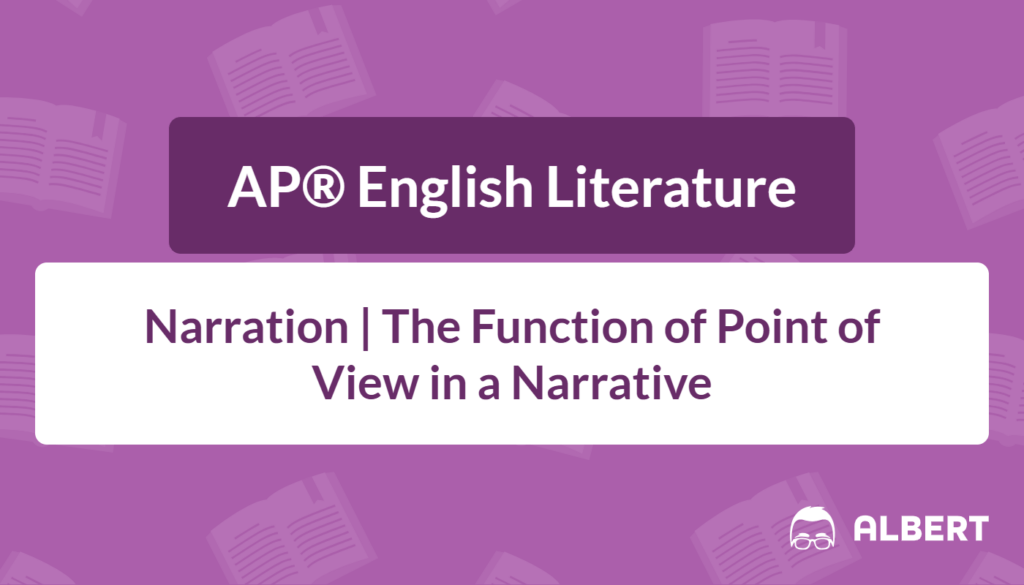Stories do much more than entertain. They guide readers through experiences and perspectives that can shape how characters and events are understood. One element that strongly influences this journey is narrative point of view—the position from which a story is told. Whether a tale unfolds through the eyes of a single character or an all-knowing narrator, point of view affects how readers perceive motives, empathize with characters, and interpret overall themes. Below is an overview of the most common types of point of view and how they operate in short fiction and other genres frequently encountered in AP® Literature.
What We Review
Understanding Narrative Point of View
Narrative point of view describes the perspective from which a story is told. It involves the narrator’s position, whether that narrator is a character within the text or an external observer. This perspective can highlight certain details and conceal others, steering readers toward particular interpretations.
Because each perspective carries distinct insights and blind spots, it is crucial to recognize which point of view the author has selected. This skill is especially valuable on the AP® Literature exam, where close reading of narrative perspective can reveal deeper themes, character motivations, and the author’s purpose.
Different Types of Point of View
First Person Point of View
When a story uses first person point of view, a character within the text narrates. This character often uses “I” or “we,” and the narration is typically colored by personal emotions and experiences.
- A well-known example is F. Scott Fitzgerald’s The Great Gatsby. Here, Nick Carraway says, “In my younger and more vulnerable years my father gave me some advice…” This line establishes that Nick is recounting events from his unique vantage point.
- Notice how the narrator’s tone and judgments shape the way readers perceive Gatsby. The narrative lingers on Nick’s impressions, influencing the audience’s feelings about wealth and the American Dream.

Step-by-Step Analysis:
- Identify key pronouns such as “I” and “me.”
- Observe how the narrator’s biases influence the description of characters.
- Connect the narrator’s personal outlook to broader themes, such as identity or morality.
This perspective lets readers experience events through the narrator’s senses. However, it can limit the reader’s knowledge of other characters since everything is filtered through the narrator’s lens.
Second Person Point of View
A second person point of view addresses the reader directly using “you,” placing the audience in the protagonist’s position. This approach can create an immediate sense of involvement or tension.
- A subtle example appears in certain passages of Tim O’Brien’s The Things They Carried, where the narration occasionally ventures into second person: “You feel the wind coming off the river, and you try not to think about what’s next.”
- Here, the text inserts readers into the character’s mindset. The focus on “you” encourages personal engagement with the wartime setting.
Step-by-Step Analysis:
- Look for direct address to the reader with “you.”
- Reflect on how the narrator’s instructions or descriptions build immersion.
- Consider the emotional response this view might provoke, especially in scenes of conflict or introspection.
Though second person narratives are less common, they create a powerful sense of urgency and intimacy when used effectively.
Third Person Point of View
Third person point of view places the narrator outside the events of the story. The narrator typically uses “he,” “she,” or “they” when describing characters. However, within third person, authors can adopt different levels of knowledge and insight.
Omniscient Point of View
An omniscient point of view allows the narrator to know every character’s thoughts, feelings, and backgrounds. This perspective can shift focus from one character’s inner world to another’s without limitation.
- Toni Morrison’s Beloved offers moments of an omniscient narrator exploring multiple characters’ inner lives. For instance, the narration might reveal the private struggles of Sethe and Denver in the same chapter, moving fluidly between their perspectives.
- When the text states how different characters “remember, and that memory weighs on their hearts,” it shows a narrator who can see all internal conflicts.
Step-by-Step Analysis:
- Note if the narrator reveals several characters’ thoughts and motivations at once.
- Track how the narrator’s broader knowledge shapes the story’s tone or tension.
- Observe how the shift between characters builds a shared thematic thread, such as the lasting impact of trauma.
Omniscient narration allows readers to see the complexities of a group of characters, but it can also create distance. Since no character’s voice dominates, emotional attachment might be spread out.
Limited Point of View
A limited point of view focuses on only one character’s thoughts. Even though the narrator remains outside the story, the perspective stays anchored to one individual.
- Zora Neale Hurston’s Their Eyes Were Watching God primarily follows Janie’s experiences, even though the novel uses third person. Readers hear Janie’s thoughts and see events from her viewpoint.
- Lines like “Janie saw her life like a great tree in leaf…” highlight the narrator’s focus on Janie’s internal reflections rather than other characters’ thoughts.
Step-by-Step Analysis:
- Pay attention to whose mind and emotions are most frequently revealed.
- Notice which characters remain elusive because the perspective does not enter their thoughts.
- Connect this focus to the novel’s key themes, such as Janie’s search for identity and independence.
A limited perspective provides a window into a single character’s experiences, which can boost emotional connection and keep some elements of the plot hidden until the narrator learns them.
The Function of Point of View in a Narrative
Influence on Character Understanding
The choice of point of view can influence how deeply readers empathize with a character or suspect hidden motives. In Mary Shelley’s Frankenstein, the narrative shifts from Victor Frankenstein’s voice to the monster’s own story. When readers encounter the monster’s internal struggles—“I was benevolent; my soul glowed with love and humanity”—they may feel compassion. This alteration in perspective forces the audience to see the monster’s solitude and suffering. Different viewpoints expand the complexity of each character, revealing that apparent villains can also be victims of circumstance.
Impact on Plot Development
Point of view also shapes when and how details unfold. In Shakespeare’s Hamlet, the limited perspective of Hamlet’s own soliloquies reveals his wavering mindset, including doubts about avenging his father. If the story offered an omniscient narrator, the audience might lose some of Hamlet’s indecision, which fuels the play’s tension. Instead, the speeches—“To be, or not to be…”—draw readers into Hamlet’s personal conflict and heighten the suspense about his next move. Here, the chosen perspective controls both the pace and the emotional weight of the plot.
Comparisons of Different Points of View
Because point of view dramatically affects tone and character development, comparing them can highlight the author’s purpose:
First person vs. third person
- In first person stories like The Great Gatsby, perceptions are limited to one narrator’s biases. In third person works such as Their Eyes Were Watching God, an external narrator can focus on one character’s thoughts (limited) or shift to multiple viewpoints (omniscient).
Second person vs. first person
- Second person thrusts readers into the narrative’s center, whereas first person keeps a single character in that role. One fosters direct immersion; the other offers reflective insight.
Omniscient vs. limited
- Omniscient offers a broader view of multiple characters. Limited keeps readers attached to one character’s discoveries and revelations.
Each approach has unique strengths. Some authors even combine perspectives (as Mary Shelley does), leveraging point of view to enhance empathy, tension, or thematic depth.
Vocabulary Reference Chart
| Term | Definition |
| Narrative Point of View | The perspective from which a story is told. |
| First Person Point of View | The narrator participates in the story using “I” or “we.” |
| Second Person Point of View | The narrator addresses the reader directly using “you.” |
| Third Person Point of View | The narrator reports the story from outside the characters. |
| Omniscient Point of View | The narrator knows all thoughts and feelings of all characters. |
| Limited Point of View | The narrator reveals thoughts and feelings of only one character at a time. |
Recognizing each type of point of view and its function is essential for close reading and in-depth analysis. By noticing the narrator’s scope and limitations, students can interpret how authors shape meaning, reveal character complexity, and manage the pacing of a story. This skill is crucial for success on the AP® Literature exam, as well as for developing a deeper appreciation of literature in general.
Sharpen Your Skills for AP® English Literature and Composition
Are you preparing for the AP® English Literature and Composition test? We’ve got you covered! Try our review articles designed to help you confidently tackle real-world AP® English Literature and Composition problems. You’ll find everything you need to succeed, from quick tips to detailed strategies. Start exploring now!
- AP® English Literature: Narrator and Speaker
- AP® English Literature: Narrator’s Perspective
- AP® English Literature: Narrator Reliability
Need help preparing for your AP® English Literature and Composition exam?
Albert has hundreds of AP® English Literature and Composition practice questions, free response, and full-length practice tests to try out.








